Question from Michael.:
When did Li Tian die?
-Michael
Hi Michael –
I’m assuming you mean Li Tian, the monk who is most widely credited as the inventor of fireworks. I have to admit, you almost had me stumped on this one, but again, perseverance (or should I say need-to-know stubbornness) prevailed!
Some deeper research into the invention of fireworks led me to discover Li Tian, the inventor of fireworks, apparently lived from 601 AD to 690 AD. This was during the reign of Emperor Taizong (Li Shimin), first emperor of the Tang Dynasty. As the most popular legend goes, the Emperor’s prime minister had been haunted by the ghost of an evil dragon and Li Tian’s fireworks helped scare away the evil spirit.
What’s really interesting to me is the fact that these dates contradict some widely circulated information that Li Tian unveiled his invention during the Song Dynasty in the 10th century. But, knowing the legend includes the Emperor Taizong, and having historical record of his reign during the early half of the 7th century (he ruled from 621 until his death in 649 AD ), we know this simply cannot be true.
My best guess is the confusion comes from the fact that a temple in Li Tian’s honor was built in his home region during the Song Dynasty and somewhere along the lines this was mistranslated into being the time that he also lived.
More research into Li Tian’s hometown, the temple, and a local fireworks museum helped me confirm the facts. In the process, I also confirmed that April 18, a day where offerings are made to Li Tian and fireworks are set off in his honor, is purported to be the clever monk’s birthday.
Cheers to you, Michael! This was a tough one but it got me digging deeper into both the legend and the truth about fireworks!
Great question, hope you enjoyed the answer as much as I enjoyed seeking it out!
_tG
Ask the Geek, Get a Free Patent Mug
That’s right, if your question is chosen to be featured in our weekly “Invention Geek” column, we’ll send you a free one-of-a-kind patent mug custom pressed with a picture from your invention and the title of Honorary Invention Geek.
Got a pressing question about innovation history? Jump over to Ask the Invention Geek for details & an easy entry form!
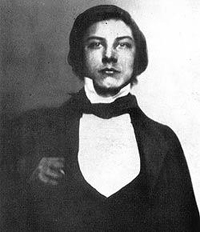 In 1856, a 17-year-old in his home laboratory discovered the first synthetic dye. William Henry Perkin’s mentor at the Royal Academy of Science, August W. Hofmann, had published an article about the possibility of creating synthetic quinine to lessen the cost of treating malaria. Perkin was excited about the idea and began experimenting with ways to produce this substance. He continued his experiments at his own home laboratory in London while on Easter vacation.
In 1856, a 17-year-old in his home laboratory discovered the first synthetic dye. William Henry Perkin’s mentor at the Royal Academy of Science, August W. Hofmann, had published an article about the possibility of creating synthetic quinine to lessen the cost of treating malaria. Perkin was excited about the idea and began experimenting with ways to produce this substance. He continued his experiments at his own home laboratory in London while on Easter vacation.
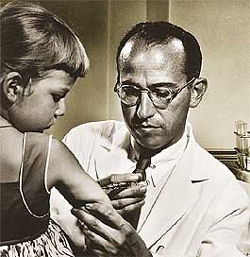 Polio was once a disease feared each summer by parents and children living in cities throughout the world. Epidemics of the disease were reported during the summer season starting in 1910. The polio epidemic of the summer of 1952 was the worst in the history of the United States. About fifty-eight thousand cases were reported with 3,145 deaths and 21,269 children left with some level of paralysis. Luckily, research was being done to develop a vaccine for this children’s illness.
Polio was once a disease feared each summer by parents and children living in cities throughout the world. Epidemics of the disease were reported during the summer season starting in 1910. The polio epidemic of the summer of 1952 was the worst in the history of the United States. About fifty-eight thousand cases were reported with 3,145 deaths and 21,269 children left with some level of paralysis. Luckily, research was being done to develop a vaccine for this children’s illness.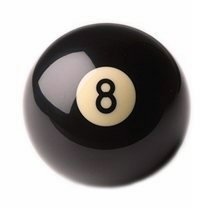 The first thermoplastic was exhibited in 1862 at the London International Exhibition. Parkesine was invented in 1855 in London by Alexander Parkes. Parkesine was an organic material made by dissolving cellulose nitrate in solvent. The material could supposedly do everything that rubber could do only it was cheaper. In 1866, Parkes formed the Parkesine Company to produce his plastic. It was not a commercial success though because it was expensive, easily cracked and highly flammable.
The first thermoplastic was exhibited in 1862 at the London International Exhibition. Parkesine was invented in 1855 in London by Alexander Parkes. Parkesine was an organic material made by dissolving cellulose nitrate in solvent. The material could supposedly do everything that rubber could do only it was cheaper. In 1866, Parkes formed the Parkesine Company to produce his plastic. It was not a commercial success though because it was expensive, easily cracked and highly flammable.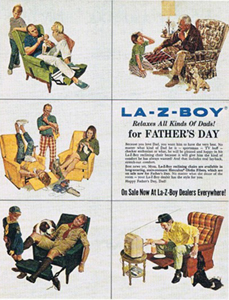 On March 24, 1927, two cousins, Edward Knabusch and Edwin Shoemaker, left their steady, secure employment to start a furniture company. Knabusch was a woodworker and Shoemaker was a farmer. Shoemaker became interested in woodworking after learning about all of tools Knabusch used. They began building furniture in Knabusch’s father’s garage for their new company, the Kna-Shoe Manufacturing Company. With Shoemaker’s building talent and Knabusch marketing skills, the company began to grow.
On March 24, 1927, two cousins, Edward Knabusch and Edwin Shoemaker, left their steady, secure employment to start a furniture company. Knabusch was a woodworker and Shoemaker was a farmer. Shoemaker became interested in woodworking after learning about all of tools Knabusch used. They began building furniture in Knabusch’s father’s garage for their new company, the Kna-Shoe Manufacturing Company. With Shoemaker’s building talent and Knabusch marketing skills, the company began to grow. Horace Wells first witnessed the effects of laughing gas in 1844 when it was given to him by a member of a traveling circus. He would then become the first patient to be operated on under anesthesia. He had a tooth pulled by an associate. He later began using the gas on his own dental patients. He never attempted to patent the procedure because he believed the pain relief should be available to all.
Horace Wells first witnessed the effects of laughing gas in 1844 when it was given to him by a member of a traveling circus. He would then become the first patient to be operated on under anesthesia. He had a tooth pulled by an associate. He later began using the gas on his own dental patients. He never attempted to patent the procedure because he believed the pain relief should be available to all.
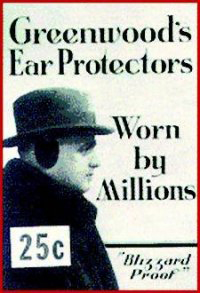 Chester Greenwood was an avid ice skater who lived in bitterly cold Maine. He attempted to keep his ears warm while skating using a scarf. But the bulky and itchy scarf he wrapped around his ears was unsuccessful. He needed to find a better way to stay warm while skating. At the age of 15, he made two circular hoops from wire and asked his grandmother to sew beaver fur and velvet on them. He held his two fur covered loops together with a steel band that created a headband. His new contraption was more much successful in keeping his ears warm.
Chester Greenwood was an avid ice skater who lived in bitterly cold Maine. He attempted to keep his ears warm while skating using a scarf. But the bulky and itchy scarf he wrapped around his ears was unsuccessful. He needed to find a better way to stay warm while skating. At the age of 15, he made two circular hoops from wire and asked his grandmother to sew beaver fur and velvet on them. He held his two fur covered loops together with a steel band that created a headband. His new contraption was more much successful in keeping his ears warm.